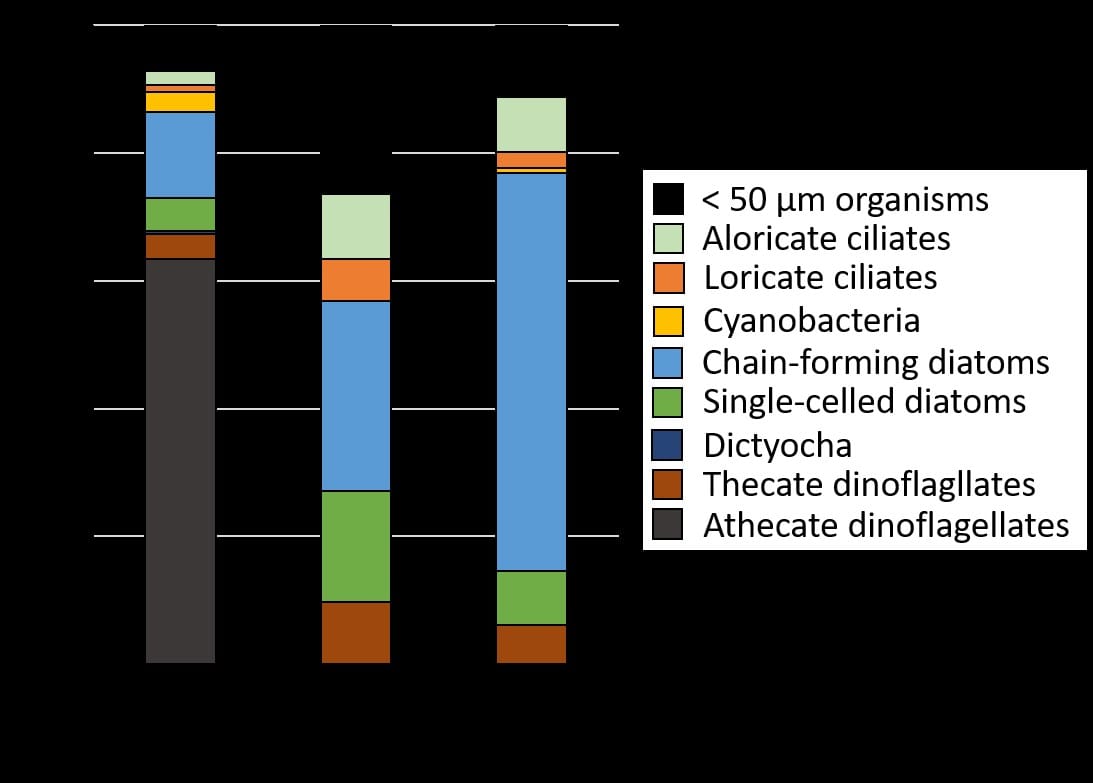Trade-offs between competitive ability and resistance to top-down control in marine microbes
Jinny Yang & Chih-hao Hsieh
Prof. Chih-hao Hsieh and former master student, Jinny Yang, from the Institute of Oceanography, NTU, using a novel experimental setting, for the first time, demonstrated the empirical evidence supporting the “kill-the-winner” hypothesis operating in marine microbes. This finding conducted using microbial communities from the East China Sea is published in mSystem (Mar. 2023).
Trade-offs between competitive ability and resistance to top-down control manifest the “kill-the-winner” hypothesis that explains how mortality caused by protists and viruses can promote bacterial diversity. Although this hypothesis has brought attention for decades, the existence of such trade-offs has not yet been investigated in natural marine bacterial communities. To address this research question, the team conducted in situ dilution experiments on board of research vessel to manipulate top-down control pressure and then applied 16S rRNA gene high-throughput sequencing techniques to assess the responses of each bacterial taxon. This experimental setting allows to estimate taxon-specific growth rate and mortality; here, the growth rate is considered as competitive ability and the mortality refers to inverse of resistance to top-down down control (e.g., protist predation or virus infection). Overall, bacterial taxa with higher top-down-control-free growth rates were accompanied by lower top-down-control-caused resistance, supporting the existence of competition-resistance trade-offs in marine bacteria (Figure 1A). Furthermore, competition-resistance trade-offs were more robust when top-down control was caused by protists+viruses combined than by protists only. When protists+viruses were diluted, the bacterial rank abundance distribution became steepened and evenness and richness were decreased (Figure 1B), indicating that “killing-the-winner” helps maintain bacteria community structure and promote bacteria diversity. The results indicate the existence of competition-resistance trade-offs in marine microbes and demonstrate the positive impacts of such trade-offs on bacterial diversity.
Reference:
Yang, J. W, F. H. Chang, Y. C. Yeh, A. Y. Tsai, K. P. Chiang, F. K. Shiah, G. C. Gong, and C. H. Hsieh. (2023) Trade-offs between competitive ability and resistance to top-down control in marine microbes. mSystems. 8: e01017-22.

Figure 1. The study found that (A) bacterial taxa with higher top-down-control-free growth rates were accompanied by lower top-down-control-caused resistance, supporting the existence of competition-resistance trade-offs, and (B) when protists+viruses were diluted, the bacterial species rank abundance distribution (SAD) became steepened and evenness and richness were decreased, indicating that “killing-the-winner” helps maintain bacteria community structure and promote bacteria diversity. Nevertheless, the “Kill-the-winner” mechanism operated more strongly in the “protists+viruses combined” (red solid lines) experiments than the “protists-alone” experiments (black dashed lines).








